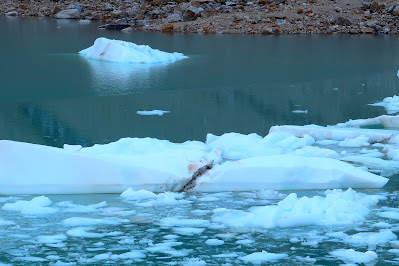It all started with a calm, uneventful hurricane season. As August turned into September and the end of September approached, I thought that finally, we would have a season free from the worry and anxiety that marks tracking a tropical system to its final destination on land or in the ocean. When Ian first formed, it took Paul Dellegatto to make me pay attention to the obvious -- once a tropical system gets into the Gulf of Mexico, there is no option but to make landfall. I went through almost all the stages of grief, in the wrong order, and threw some more stages of turmoil in for added drama.
Denial went like this -- "Oh, it's been such a quiet hurricane season (Fiona still hadn't sunk in), that it will be all right. God is giving us a break this year."
Denial quickly gave way to...
Bargaining -- "OK, God -- what can I trade you to make Ian just go away? My new car (oops I don't have one... supply chain problems)? My great attitude (don't have that either)? My strong faith (hmm... don't have that either)?
bargaining moved onward to...
Anger -- "OK, God -- what is the deal? Why do you allow this stuff to just keep on coming? Why can't you reach us some other way -- other than through one horror after another?
as anger faded, a combination of begging and praying took its place...
- Breathe In -- "Push it west"
- Breathe Out -- "Weaken it"
- Breathe, Pray, Breathe
desperate prayer gave way to...
Depression and dread when prayer felt like it was going nowhere except in and out of my lungs. The inevitable Ian just keep churning onward to smother Florida with a dead hit on Tampa Bay, one of the most if not the most vulnerable areas to storm surge in the world.
When Ian changed his mind and headed east at the eleventh hour, depression and dread morphed into a nauseating combination of relief, confusion, and renewed dread as Ian did not weaken in the Gulf before landfall but instead barreled into southwest Florida just a hair shy of Category 5. And as he began to march across the state as if he owned it, all of my emotions surrounding Ian came together into a surreal numbness as the wind and rain moved through at a "walking pace". Staying indoors and trying to remain distracted from the rain pounding on the windows and the wind howling past in a very foul mood, I knew what I was hearing and seeing was nothing compared to what was going on in southwest Florida.
In the calm evening on the day after, still sitting in Orlando and waiting to head to Clearwater, I was nowhere near the acceptance stage of grief. My contention with God on these Natural Disasters (aka horrific suffering and pain) remains. I haven't even taken the smallest of baby steps toward acceptance. While it doesn't change my faith and conviction that God exists, I have an ever lengthening list of questions to ask Him if I ever get the chance.
- For God: Why? Why Gigantic Hurricanes? Why Massive Fires? Why? Why? Why? (no platitudes or generalities please)
- for people: what I want to ask and say...could fill a book.
Prayers ping ponging inside my head like F-16's flying around in the same hangar tonight for all those who are suffering tonight because of Ian.




















































